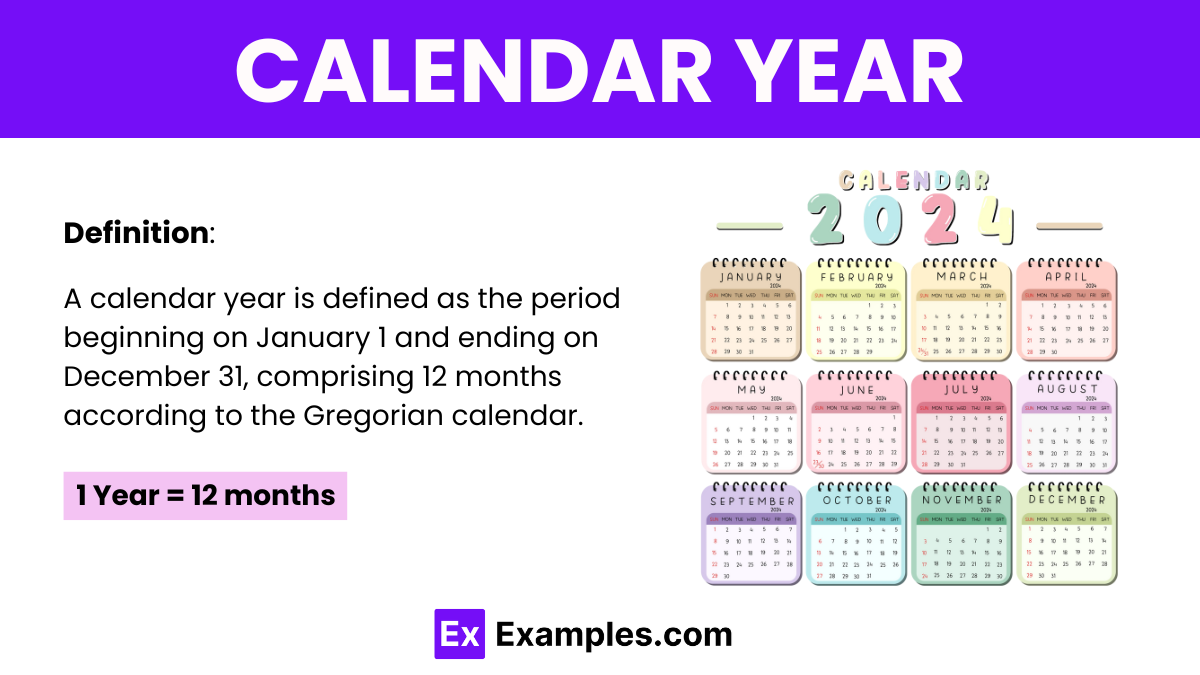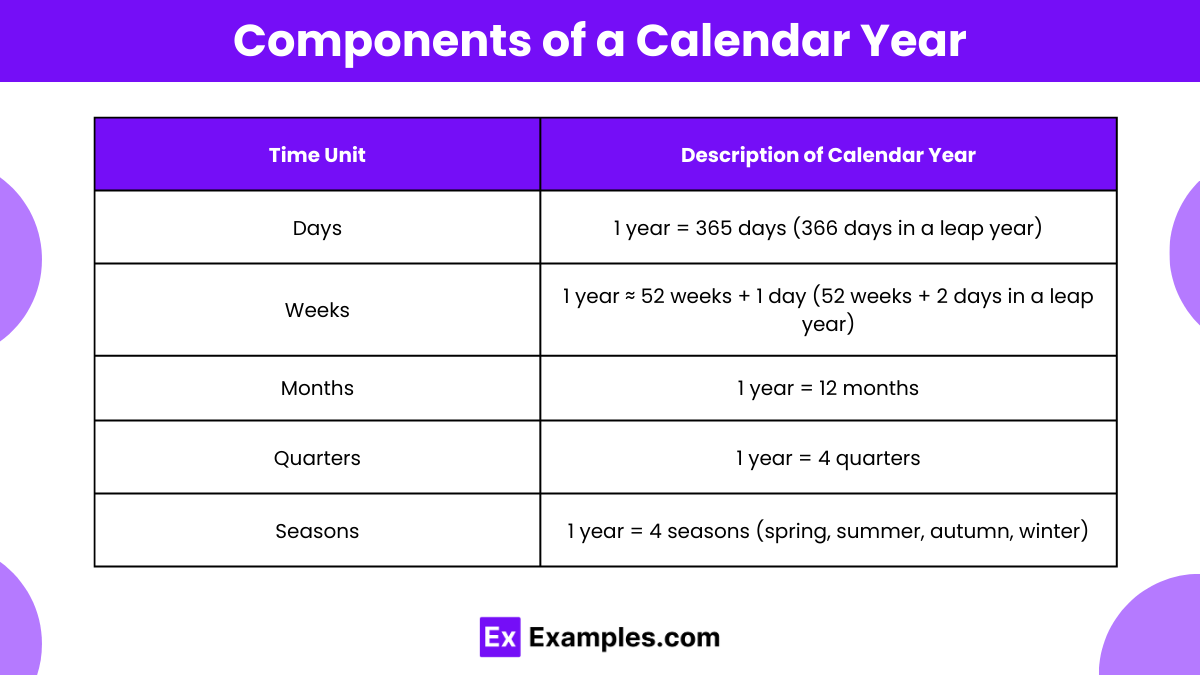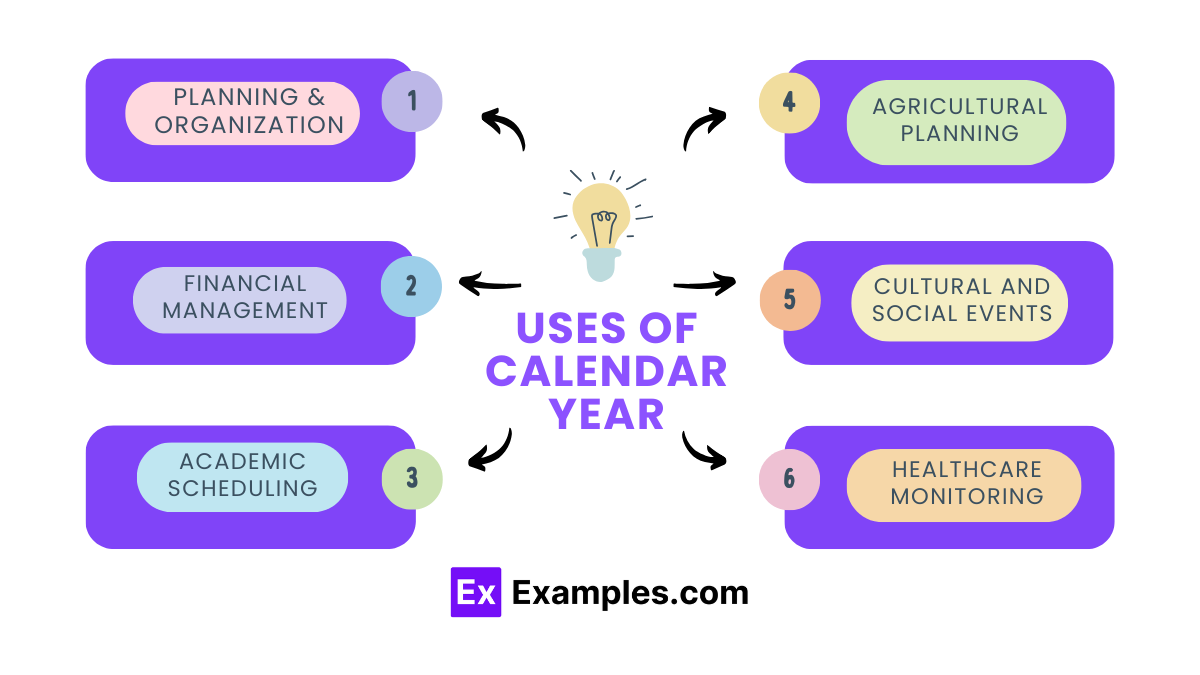What is the number of days in a leap year?
364
365
366
367


A calendar year is defined as the period beginning on January 1 and ending on December 31, comprising 12 months according to the Gregorian calendar. This setup aligns with the Earth’s journey around the Sun, thereby organizing and simplifying annual planning and events.
This structure corresponds to the Earth’s orbit around the Sun, thus enabling systematic tracking of annual events and facilitating structured time management. Each month plays a part in rounding out the full cycle of seasons and holidays, making the calendar year essential for both personal and business planning.

An ordinary year includes 365 days, distributed over 12 months according to the Gregorian calendar. This arrangement closely matches the Earth’s orbit around the Sun, thereby enabling consistent annual planning.
In contrast, a leap year occurs every four years to help correct the calendar alignment further due to the Earth’s orbit taking approximately 365.25 days to complete. As a result, an extra day is added to the calendar every four years in February, making it 29 days long instead of the usual 28. This adjustment ensures that the calendar remains in sync with astronomical events, particularly the vernal equinox, which is critical for accurately determining the seasons.
Transitioning from an ordinary year to a leap year plays a crucial role in maintaining the balance and accuracy of our timekeeping systems. This adjustment ensures that annual events and seasonal cycles stay predictable and consistent.
Here’s a table listing the months in a year:
| Months | Number of Days |
|---|---|
| January | 31 |
| February | 28 or 29 |
| March | 31 |
| April | 30 |
| May | 31 |
| June | 30 |
| July | 31 |
| August | 31 |
| September | 30 |
| October | 31 |
| November | 30 |
| December | 31 |
A calendar year structures our daily activities, aligning with the Earth’s orbit around the Sun. It enables consistent scheduling and planning, essential for businesses, education, and personal management. Additionally, it segments the year into manageable quarters and seasons, aiding in financial planning and agricultural activities. The calendar year also marks cultural and social events, fostering community and cultural celebrations.
An ordinary year in the Gregorian calendar consists of 365 days. This alignment closely matches the Earth’s orbit around the Sun, which is crucial for consistent annual planning.
Transitioning to a leap year, we add an extra day to correct the slight discrepancy caused by the Earth’s orbit taking about 365.25 days to complete. Thus, a leap year contains 366 days, with the additional day added to February, making it 29 days long instead of 28.
This adjustment ensures that our calendar remains in sync with the astronomical year, preventing seasonal drift over time and maintaining the accuracy needed for scheduling and planning that depends on precise seasonal and annual timing.
A typical year consists of approximately 52 weeks. Each week, made up of seven days, totals to around 364 days. However, since an ordinary year contains 365 days, this leaves us with an extra day. Transitioning to a leap year, which has 366 days, the additional day adds a little more complexity, totaling roughly 52 weeks and 2 days.
This calculation ensures that our weekly planning remains consistent throughout the year, helping to organize our schedules effectively. The slight excess over 52 weeks ensures that each year aligns closely with the Earth’s orbit around the Sun, maintaining the accuracy of our calendars over time.

Here’s a table describing the components of a calendar year:
| Time Unit | Description of Calendar Year |
|---|---|
| Days | 1 year = 365 days (366 days in a leap year) |
| Weeks | 1 year = 52 weeks + 1 day (52 weeks + 2 days in a leap year) |
| Months | 1 year = 12 months |
| Quarters | 1 year = 4 quarters |
| Seasons | 1 year = 4 seasons (spring, summer, autumn, winter) |
This table provides a structured view of how a calendar year is divided into different units of time, facilitating easier planning and organization throughout the year.
Fill in the Blanks:
Answers:

Yes, a calendar year typically consists of 365 days, except for leap years, which occur every four years and add an extra day to make it 366 days.
A calendar year refers to the period starting on January 1 and ending on December 31, spanning exactly 12 months, and aligning with the Gregorian calendar used globally.
Yes, a calendar year consists of 12 months, running from January 1 to December 31, aligning with the Gregorian calendar used globally for civil and organizational purposes.
The actual year refers to the current year according to the Gregorian calendar. It is the year that is presently ongoing, marked by a four-digit number.
Text prompt
Add Tone
10 Examples of Public speaking
20 Examples of Gas lighting
What is the number of days in a leap year?
364
365
366
367
How often does a leap year occur?
Every 2 years
Every 4 years
Every 5 years
Every 10 years
What day of the week does January 1, 2025, fall on?
Monday
Tuesday
Wednesday
Thursday
Which of the following years is a leap year?
1900
2000
2100
2200
What day of the week does December 25, 2024, fall on?
Friday
Saturday
Sunday
Monday
How many months have 31 days in a regular year?
7
8
9
10
In what month does a leap year have an extra day?
January
February
March
April
What is the total number of days in a non-leap year?
364
365
366
367
Which of the following years will be the next leap year after 2024?
2025
2026
2027
2028
What day of the week was January 1, 2023?
Sunday
Monday
Tuesday
Wednesday
Before you leave, take our quick quiz to enhance your learning!

